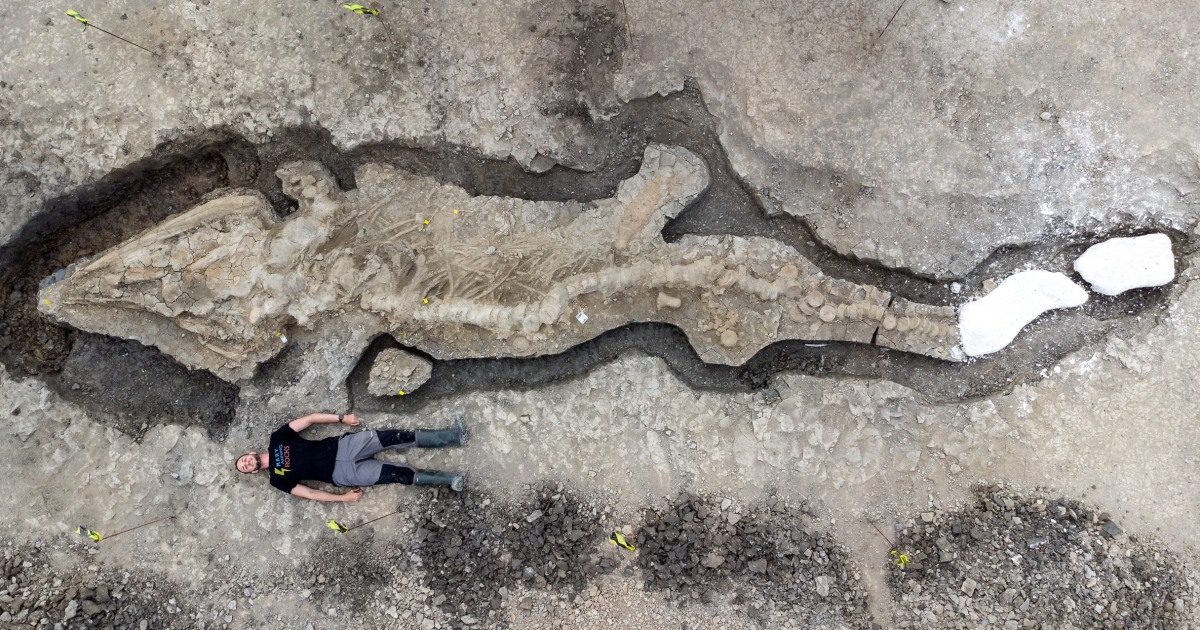
He noticed something that looked like clay pipes sticking up out of the mud, but after a closer look, thought the pieces could be vertebrae. He called local officials and it was not long until Lomax came to inspect the fossil.
The huge and fragile skeleton was then carefully excavated in a complex operation that took place over the course of two weeks in August and September 2021 by a team of paleontologists. The fossil was then wrapped in wooden splints encased in plaster in order to protect it.
Along with its size, the fossil was also notable because it was discovered outside of the areas on England’s southern and Yorkshire coasts where ichthyosaurs have previously been found. In contrast, this fossil was uncovered in a landlocked county around 100 miles north of London. During the Jurassic Period, the area was covered in a warm tropical sea.
“The first ichthyosaurs found in the Jurassic Period were a couple of meters long, between five and 10 feet, whereas this ichthyosaur, and others that have been found but are less complete, are the first that are real Jurassic giants,” said Lomax.
“It’s an interesting way of looking at the historic evolution of ichthyosaurs.”
Lomax said he hopes that this complete fossil will help paleontologists fill in gaps in knowledge with other incomplete ichthyosaur fossil fragments that have been discovered in Britain.
The remains are now in the lab of palaeontological conservator Nigel Larkin, where they will be cleaned, preserved and prepared, according to Lomax. The ichthyosaur will be ready to go on display in the next 18 to 24 months.
Source: | This article originally belongs to Nbcnews.com










